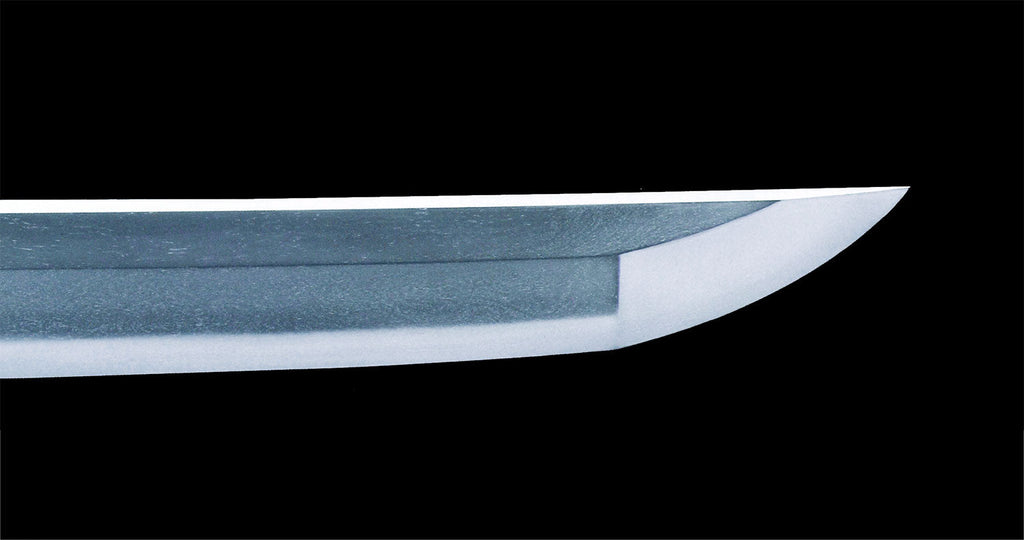An elegant style, favored by aristocrats, leading shrines, and temples
In 794, the capital was transferred from Yamato in Nara to Yamashiro, or present-day Kyoto. Kyoto then played a central role in politics and culture for more than 1,000 years until the Meiji Restoration in 1868. Naturally, during this period, a variety of sword-making techniques were developed in Kyoto, and these techniques became known as Yamashiro-den.

Yamashiro-den is characterized by its beautiful appearance, with the center of the curvature being in the center of the blade. This curvature is called Torii-zori because it resembles the shape of a shrine's Torii gate, while it is also called Kyo-zori because it is a major characteristic of the Yamashiro-den. Since most swords’ curvature up to the time were Koshi-zori, which curved near the handle, the elegant and beautiful appearance of Torii-zori was favored by aristocrats, powerful shrines, and temples. The Jitetsu of these swords was predominately Ko-mokume with fine and dense oval patterns or Ko-itame with fine itame, and most of the Hamon were suguha, with some Ko-gunome and Choji-midare pieces. Nie is especially splendid, and hataraki such as kinsuji and inazuma are very active. Boshi have small arched angles and are often Komaru or Omaru. Some also have engravings such as Sanskrit characters and Koshi-hi.

Particularly famous among Yamashiro-den are the Sanjo school, whose founder was Munechika, the Awataguchi school, whose founder was Kuniyuki, and the Rai school, whose founder was Kuniyuki, which came to prominence in the Kamakura period. Munechika's Tachi "Mikazuki Munechika," with a hamon resembling a crescent moon floating between clouds, is one of the "Five Swords under Heaven," which is considered one of the most famous among all Japanese swords.
The Awataguchi school produced master swordsmiths such as Kunitomo, Kuniyasu, and Kunitsuna from the late Heian period to the early Kamakura period. The jitetsu of Awataguchi school swords are said to be the highest peak of Japanese sword craftsmanship. The Rai school produced master swordsmiths such as Kunitoshi, Kumimitsu, and Ryokai from the Kamakura period to the Nanbokucho period, and like Yamato-den, spread throughout Japan as samurai families, shrines, and temples in various regions brought their swords with them as they returned to their native homes. The Rai school in particular spread smiths to various regions to make swords, thus transmitting Yamashiro-den to Higo (Kumamoto) and Echizen (Niigata).

Yamashiro-den swordsmiths were most active from the Heian to Kamakura periods and gradually declined after the rise of Soshu-den. Although works of Yamashiro-den still exist in the late Muromachi period, it is regrettable that they have lost their characteristics.

Want to buy authentic Samurai swords directly from Japan? Then TOZANDO is your best partner!

Leave a comment: